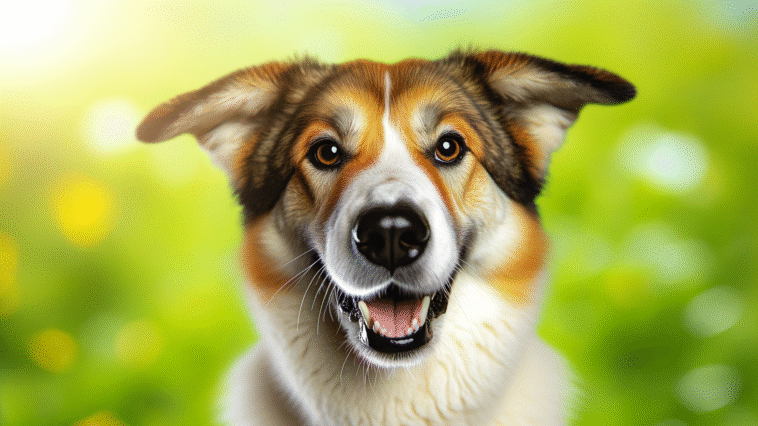
For many dog owners, understanding our furry companions can sometimes feel like trying to decipher an ancient scroll. We adore them for their loyalty, playfulness, and unique personalities, but when it comes to recognizing their emotions, things can get a bit tricky. One particularly important aspect of a dog’s well-being is their level of confidence. A confident dog is not only happier but also better equipped to handle life’s challenges with grace. Over my 10+ years as a certified dog trainer, I’ve honed my skills in deciphering the subtle cues that indicate a dog is feeling confident. Let me share with you some practical tips and personal insights on how to know if your dog is feeling confident.
1. Body Language Speaks Volumes
When it comes to understanding how your dog is feeling, their body language is like a secret code waiting to be cracked. Confident dogs typically display certain postures and movements that exude self-assurance. One key indicator is a relaxed and loose body posture. Picture your dog standing tall with their tail held high, ears perked up, and a soft, wiggly body – that’s the picture of confidence right there! On the other hand, a fearful or anxious dog may cower, tuck their tail between their legs, flatten their ears, and even tremble.
In my experience, observing how your dog carries themselves in different situations can offer valuable insights into their confidence levels. For example, during a visit to the dog park, a confident dog might confidently approach new dogs with a relaxed wagging tail, engaging in playful interactions without showing signs of fear or aggression. On the contrary, a less confident dog may stick close to their owner, exhibit nervous behaviors like excessive panting or lip licking, or even try to hide behind objects or people.
Another telltale sign of confidence in dogs is eye contact. Confident dogs are not afraid to make eye contact with humans and other dogs. When your dog looks at you directly with soft, relaxed eyes, it’s a sign that they trust you and feel confident in your presence. On the flip side, a dog that avoids eye contact, looks away quickly, or shows whites of their eyes (known as whale eye) may be feeling uncertain or anxious.
2. Social Interactions and Play Behavior
A confident dog is like that popular kid on the playground – sociable, friendly, and always up for a good time. Pay attention to how your dog interacts with other dogs and people to gauge their level of confidence. Confident dogs typically initiate play with a relaxed, bouncy body posture and may use play bows (front end lowered, rear end up) to signal their intentions. They enjoy socializing with other dogs, greeting them with a wagging tail and a loose body.
During playtime, confident dogs exhibit a give-and-take dynamic, taking turns chasing and being chased, wrestling, and play-biting without escalating into aggression. They may also engage in self-handicapping behaviors like rolling onto their back to invite play or taking breaks to allow other dogs to catch up during a chase. These behaviors demonstrate a secure sense of self and a willingness to engage with others in a positive manner.
On the contrary, a dog that displays signs of fear or anxiety during social interactions may exhibit stiff body language, lip licking, yawning, or even growling or snapping when approached by other dogs or unfamiliar humans. Keep in mind that fear-based behaviors can sometimes be misinterpreted as aggression, so it’s essential to look at the context and the overall body language of the dog to determine their underlying emotions.
3. Training and Enrichment Activities
Confidence is not an innate trait in dogs; it is something that can be nurtured and developed over time. Engaging your dog in training activities and enrichment exercises can significantly boost their self-confidence and overall well-being. Training provides mental stimulation, builds a bond of trust between you and your dog, and gives them a sense of accomplishment when they master new skills.
In my training sessions, I’ve found that positive reinforcement methods work wonders in boosting a dog’s confidence. When a dog learns that good things happen when they exhibit certain behaviors, they become more willing to try new things and step out of their comfort zone. Start with simple commands like sit, stay, or come and gradually progress to more advanced tricks like roll over or play dead. Celebrate each small success with treats, praise, and lots of affection to reinforce their confidence.
Additionally, engaging your dog in enrichment activities like puzzle toys, scent work, or agility training can help build their problem-solving skills, enhance their physical abilities, and boost their confidence in navigating various challenges. When a dog successfully solves a puzzle or conquers an agility course, they experience a surge of confidence and a sense of accomplishment that carries over into other areas of their life.
When you observe your dog confidently conquering a new task or approaching unfamiliar situations with ease, you’ll know that their confidence is thriving. Remember, building confidence is a journey, not a destination, and it requires patience, consistency, and a deep understanding of your dog’s unique personality and needs.
So, dear dog parents, take the time to observe and understand your dog’s body language, social interactions, and responses to training and enrichment activities. By tuning into these subtle cues and behaviors, you’ll be better equipped to gauge your dog’s level of confidence and provide them with the support they need to thrive.
Now, I’d love to hear from you! How do you recognize when your dog is feeling confident, and what have you found most helpful in boosting their self-assurance? Share your stories and insights in the comments below. Let’s continue the conversation and learn from each other’s experiences as proud dog parents!



